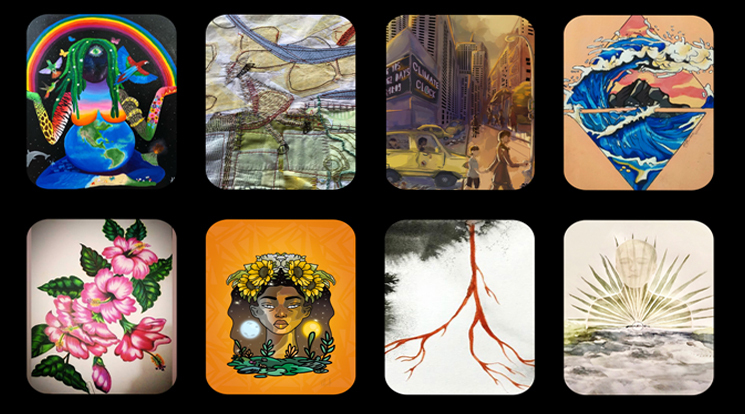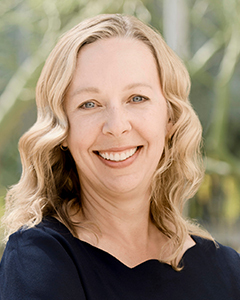This unconventional education policy report offers recommendations to address the climate

Voices of young artists and leaders from around the world converged in an unconventional policy report to be shared at UNESCO’s Transforming Education Pre-Summit in Paris this month.
Turn it Around! An Education Guide to Climate Futures was created by a community of students, faculty and artists from Arizona State University in partnership with Artists Literacies Institute and other allies to present a global picture of a radically reimagined education system that targets the root causes of climate change. The pre-summit, hosted by UNESCO, will build momentum for the actual Transforming Education Summit that takes place in September at the United Nations in New York City.
Iveta Silova, professor and associate dean of Global Engagement at ASU’s Mary Lou Fulton Teachers College, hopes the report, combined with a stack of Turn it Around! — Flashcards for Education Futures, will push policymakers to the point of action.

We talked with Silova about the flashcards, report and the potential of this pre-summit event.
Q: What are the Turn It Around! — Flashcards for Education Futures?
A: They are a learning tool for adults, made by youth, to re-imagine our approach to education and our relationship with nature and the living world during this time of climate crisis.
Q: Why do they matter?
A: Usually, flashcards are designed by educators for students. These flashcards are designed by youth for education policymakers, politicians and teachers to challenge them to think, see and act in new ways.
The cards display climate crisis-inspired artwork on one side and motives to guide decision-making about climate futures, on the other. Like traditional flashcards for literacy and numeracy, these cards introduce policymakers to new ideas and vocabulary. But they also shift and shuffle existing perspectives and practices, bringing into focus knowledge traditions that may have been forgotten or ignored.
Q: Who do you want to use them and how should they be used?
A: We originally designed the cards for policy and decision makers at all levels. But we realized they could be used by anyone, anywhere — schools, universities, communities, museums, workspaces and more. The cards offer a provocative and productive way to engage in difficult conversations about climate futures and our own roles — as educators, policymakers, parents or citizens — in turning around the climate catastrophe.
Q: Tell us about the idea behind the policy report accompanying the flashcards. Who contributed to it?
A: In addition to curating a deck of flashcards, we wrote a really unconventional policy report to highlight the main messages shared by global youth in a language that’s more familiar to policymakers. We wrote this report as a community of students, faculty and artists from Arizona State University — both graduate and undergraduate — and our colleagues from Kyoto University, National Taiwan University and the Artists’ Literacies Institute. All of the nearly 500 youth artists and leaders who contributed their artwork and ideas to the “Turn it Around!” initiative are also listed as authors. You can find their names at the end of the report. It’s a truly collective effort!
Q: Who do you want to read it? And how will you get them to read it?
A: We wrote this report for educators and education policymakers at all levels. We want them to read the report and turn toward — rather turn away from — the reality of the climate crisis, facing the environmental catastrophe unfolding in front of our eyes and acknowledging our own complicity in it. We hope that the power of socially engaged art, combined with scientific facts and gut-wrenching perspectives shared by youth, will not only catch the attention of policymakers but will also ‘move’ them on an affective level.
Q: After they read it, what do you want them to do?
A: We want readers to feel the severity of the crisis from the youth perspective, to experience the intense emotions and strong determination of their visions of education futures and to connect to the places from which young artists are writing — places that are burning, flooding and suffocating, as well as those that are beautiful, inspiring and artistic.
We want readers to realize we are in this crisis together. We are responsible for making decisions necessary to change our environmental catastrophe trajectory. More than anything else, we want readers to act on the climate crisis in order to turn it around.
Most international efforts have focused on expanding access to education for all, while introducing climate education into compulsory school curriculums. These efforts have had minimal effects on policy. We want policymakers to commit to a more radical cultural transformation needed to curb the worst impacts of the climate crisis. In addition to making climate, environmental or sustainability education compulsory, we must learn how to reconfigure our relationship with nature and the living world in more interdependent ways. And education is central to this process.
Q: If a report falls in the woods and nobody hears it, does it make a noise?
A: This report may fall in the woods without making a noise… and this is fine. Maybe it will get recycled or composted into new patterns.
But it is not the noise in the woods we are worried about. We are concerned about the noise the report could generate in the corporate boardrooms, multilateral decision-making halls and national policy-making offices.
We hope that this noise will make people uncomfortable and stir some action — or at least a strong reaction — in education policy and practice. We hope the report will instill an urgency to act now.
Learn more
View the collection of flashcards, access additional resources or download the report on the Turn it Around! website.
Turn it Around! — Flashcards for Education Futures will also be showcased in an interactive exhibition from June 10 –18 at the Espronceda Institute of Art & Culture in Barcelona, Spain. It will be a part of the Leonardo ISAST (International Society for Art, Science and Technology) exhibit entitled, “Digital Awareness for Sustainable Futures.”